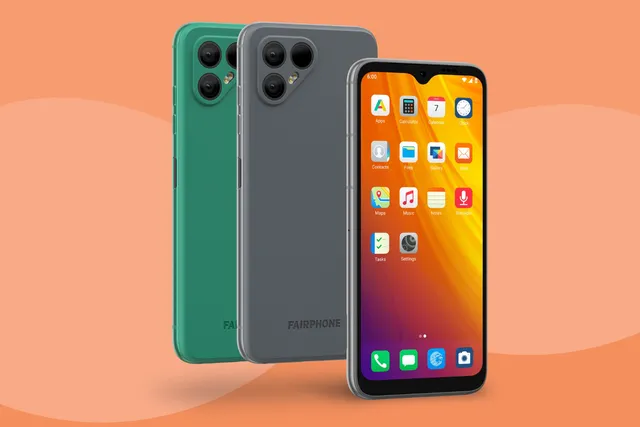The Green Mobile Revolution: Can Your Phone Be Eco-Friendly?
Our mobile phones have become an extension of ourselves. But the convenience and constant connection come at a cost to the environment. However, a Green Mobile Revolution is brewing, with new technologies and consumer choices aiming to make the mobile industry more sustainable.
The Dark Side of Mobile:
The environmental impact of smartphones is significant:
- E-waste: Rapid upgrades lead to a mountain of discarded phones, often containing toxic materials that pollute landfills.
- Manufacturing Footprint: Extracting rare earth minerals and the energy required to produce phones creates a hefty carbon footprint.
- Data Center Drain: The massive data centers supporting our mobile activities consume a huge amount of energy.
Greener pastures ahead?
The good news? The industry is taking note. Here’s a glimpse into the Green Mobile Revolution:
- Durable Designs: Phones built to last longer, with easier repairability, can reduce e-waste.
- Sustainable Materials: Research into using recycled materials and conflict-free minerals is on the rise.
- Energy Efficient Chips: Newer chipsets are designed to consume less power, reducing the environmental impact of phone usage.
- Second Life Programs: Manufacturers offering buy-back or trade-in programs for old phones encourages responsible recycling.
What can YOU do?
Consumers also play a crucial role in the Green Mobile Revolution:
- Hold onto Your Phone: Resist the upgrade cycle. Keep your phone for as long as possible.
- Consider Refurbished: Buying a refurbished phone gives a pre-owned device a new lease on life.
- Recycle Responsibly: Don’t toss your old phone! Look for certified e-waste recycling programs.
- Choose Eco-Conscious Brands: Support companies committed to sustainable practices.
The Future of Green Mobile:
The Green Mobile Revolution is a work in progress, but it holds promise. By working together, manufacturers and consumers can make the mobile world a more sustainable place. So, the next time you use your phone, consider the environmental impact, and be part of the solution!
How to Make Phones More Sustainable:
Here’s a breakdown on how to make phones more sustainable, considering both manufacturer and consumer efforts:
On the Manufacturer Side:
- Durable Designs with Easy Repair:
- Manufacturers can make phones with sturdier builds and easier access for repairs. This extends a phone’s lifespan and reduces e-waste. Think modular designs where users can replace specific parts like batteries.
- Sustainable Materials:
- Shifting towards recycled materials in phone construction cuts down on mining and resource extraction. Additionally, using conflict-free minerals ensures ethical sourcing.
- Energy Efficient Chips:
- Developing lower-power processors reduces the energy consumption of phones during operation. This translates to less energy used overall, including at data centers.
- Second Life Programs:
- Encouraging responsible recycling through buy-back or trade-in programs for old phones keeps them out of landfills and allows for material recovery.
On the Consumer Side:
- Hold Onto Your Phone:
- Resist the upgrade cycle! Keeping your phone for an extra year or two makes a big difference.
- Consider Refurbished:
- Instead of buying brand new, opt for a refurbished phone. You get a perfectly functional device while giving a pre-owned phone a second life.
- Recycle Responsibly:
- Don’t just toss your old phone! Research certified e-waste recycling programs in your area to ensure proper dismantling and material recovery.
- Choose Eco-Conscious Brands:
- Do your research! Support phone manufacturers with a reputation for sustainable practices, ethical sourcing, and longer lifespans for their devices.
By working together, manufacturers can create phones designed for longevity and responsible use, while consumers can make informed choices that minimize e-waste and environmental impact. This combined effort is what will truly drive the Green Mobile Revolution.
Sustainable Phone Brands:
Sure, here are some sustainable phone brands:
- Fairphone:A pioneer in the sustainable phone movement, Fairphone focuses on ethical sourcing, modular design for easy repairs, and long software support for their phones. Their latest model, the Fairphone 4, is made with recycled materials and uses conflict-free minerals. They are also transparent about their supply chain and labor practices.

- Samsung:While not solely focused on sustainable practices, Samsung is making strides. Their Galaxy S22 series uses recycled materials in some components and offers extended software updates for some models. Samsung also has a take-back program for old phones.

- Apple:Apple is another major manufacturer incorporating some sustainable practices. They use recycled materials in some iPhone models and offer extended software updates for their devices. Apple also has a trade-in program for old iPhones.

- Teracube:Teracube offers a unique subscription model that encourages users to keep their phones for longer. They also use recycled materials and offer a long warranty on their phones.

It’s important to note that sustainability is a complex issue, and no brand is perfect. However, the brands mentioned above are making a conscious effort to reduce the environmental impact of their phones. By doing your research and considering these factors when purchasing a new phone, you can help make the mobile industry more sustainable.
Negative impacts of mobile phones on the environment:
Our handy mobile phones come at a hidden cost to the environment. Here’s a breakdown of the negative impacts of mobile phones throughout their lifecycle:
Resource Extraction and Manufacturing
- Mining Frenzy: Phones require a cocktail of rare earth elements and metals. Mining these materials can lead to deforestation, water pollution, and soil degradation.
- Toxic Footprint: The process of extracting and refining these materials can generate hazardous waste that pollutes air and water.
- Energy Guzzler: Manufacturing phones is an energy-intensive process, contributing to greenhouse gas emissions and climate change.
E-waste Explosion
- Rapid Upgrades, Short Lifespan: The constant churn of new phone models leads to a mountain of discarded electronics. Many phones end up in landfills, where toxic materials can leach into the soil and water.
- Improper Recycling: A large portion of e-waste isn’t recycled responsibly, further harming the environment.
Data Centers Drain
- Power Hungry: The massive data centers that support our mobile activities, from cloud storage to streaming, consume a tremendous amount of energy. This can strain power grids and contribute to greenhouse gas emissions.
Overall Impact
- Climate Change: From resource extraction to energy consumption, the mobile industry contributes significantly to greenhouse gas emissions and climate change.
- Pollution: Mobile phone production and disposal can pollute air, water, and soil with toxic chemicals.
- Resource Depletion: The constant demand for rare earth elements raises concerns about resource depletion.
These are just some of the negative impacts of mobile phones on the environment. Thankfully, there’s a growing movement towards more sustainable practices in the mobile industry, along with ways for consumers to be more eco-conscious.
Thanks for Reading!
- How Will We Access Virtual Worlds on Our Phones?
- The Rise of the Subscription Phone
- Sony Xperia 1 VI Price and Review
- Realme 12 Pro Plus Review and Price
- OnePlus Nord CE4 Review and Price



